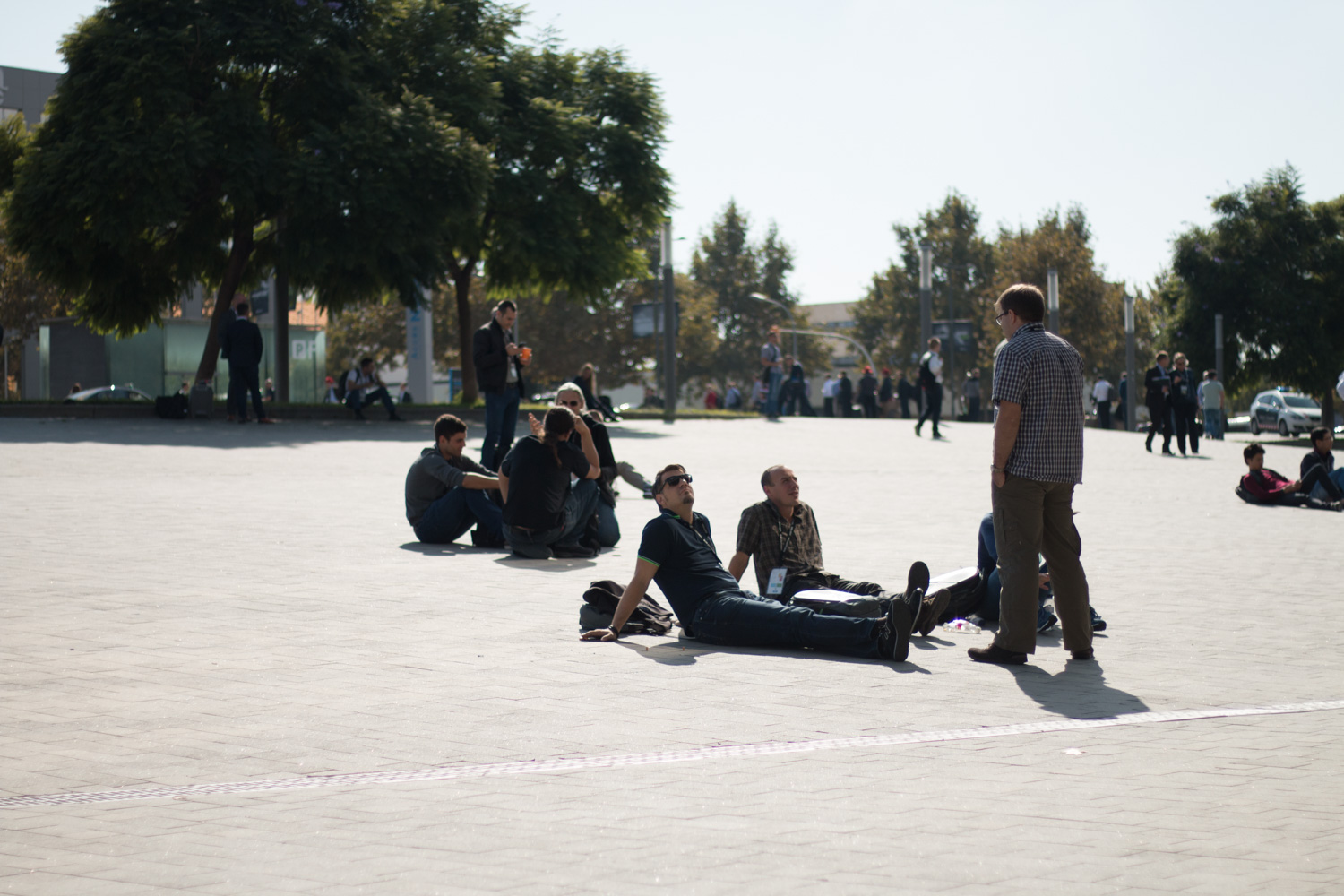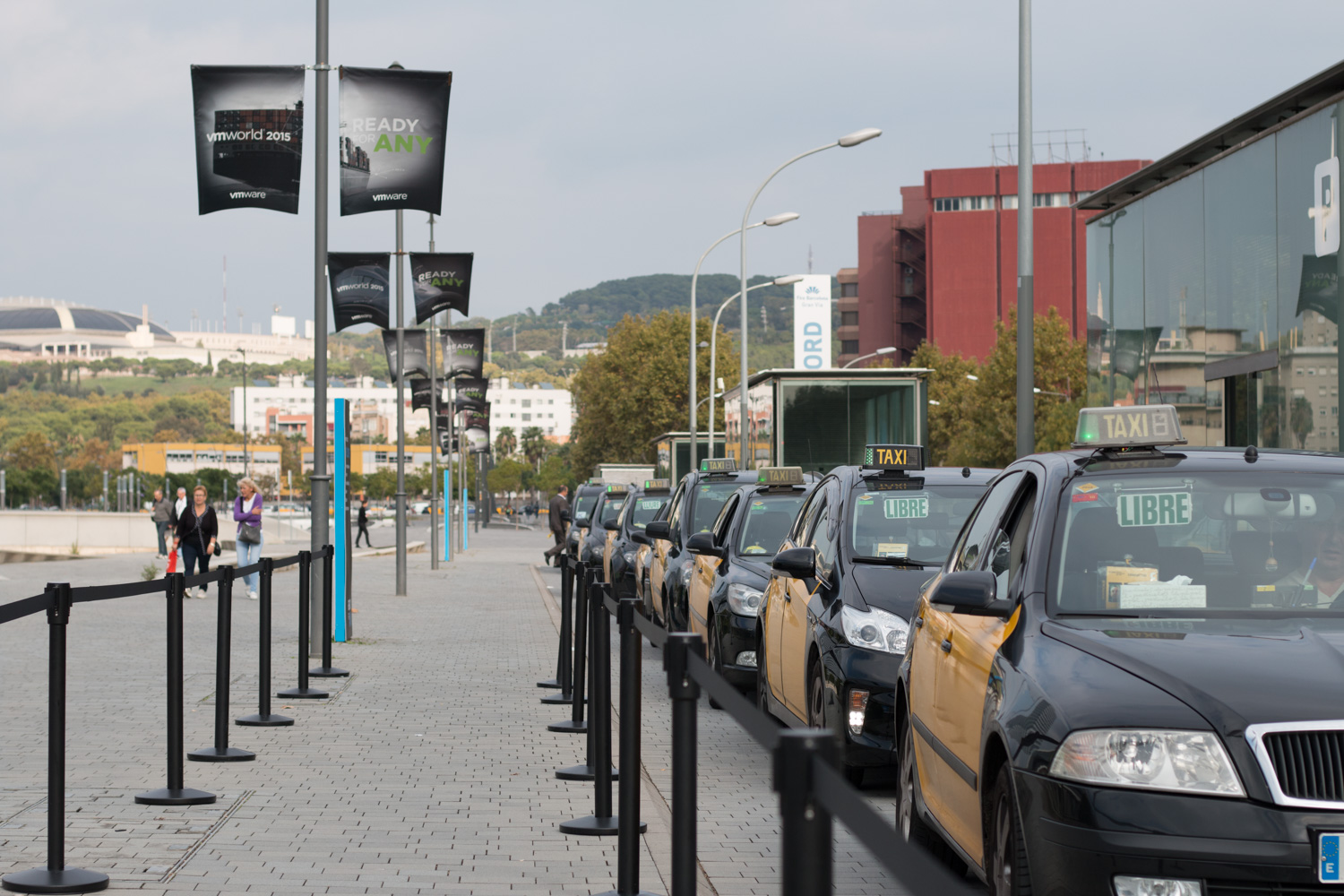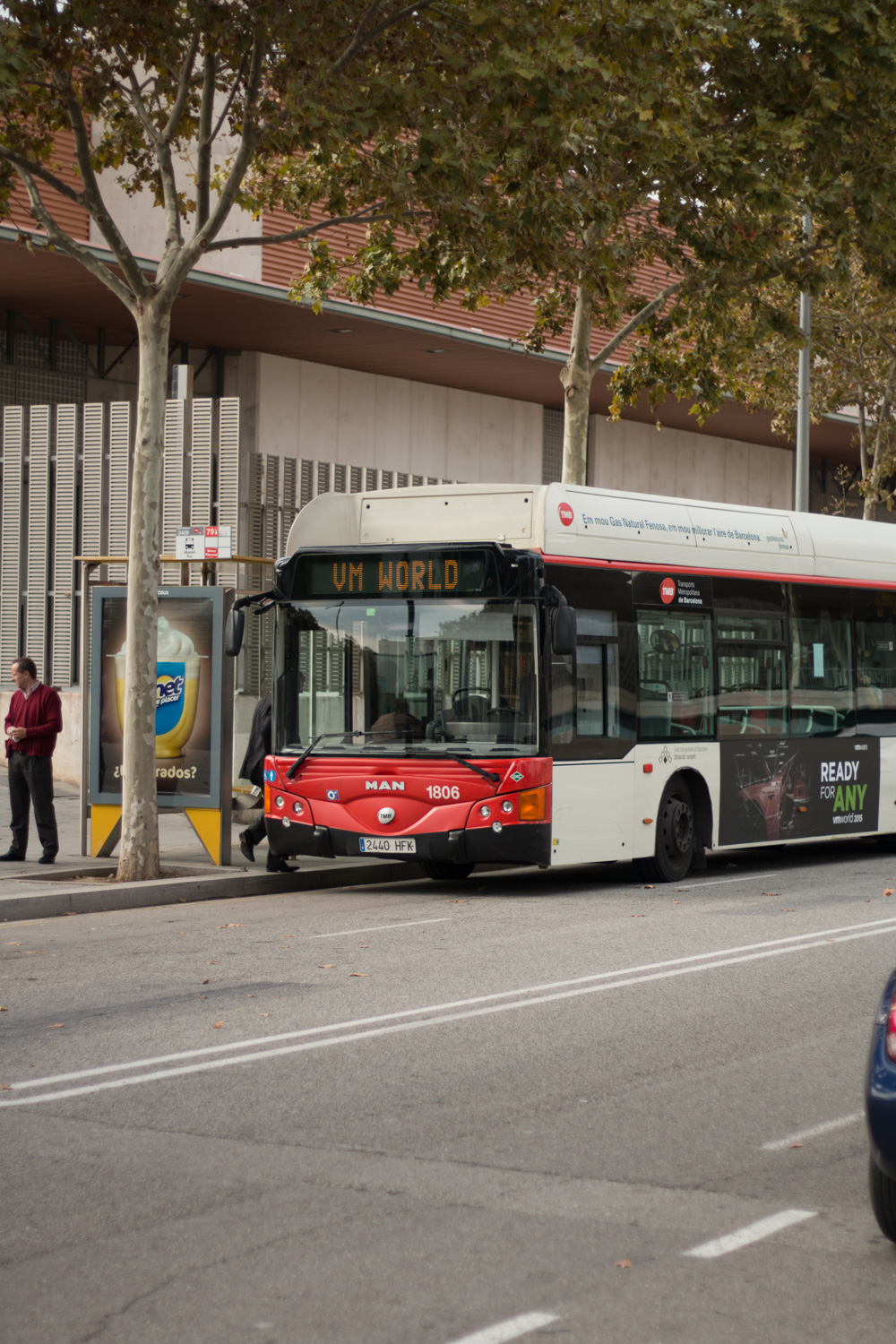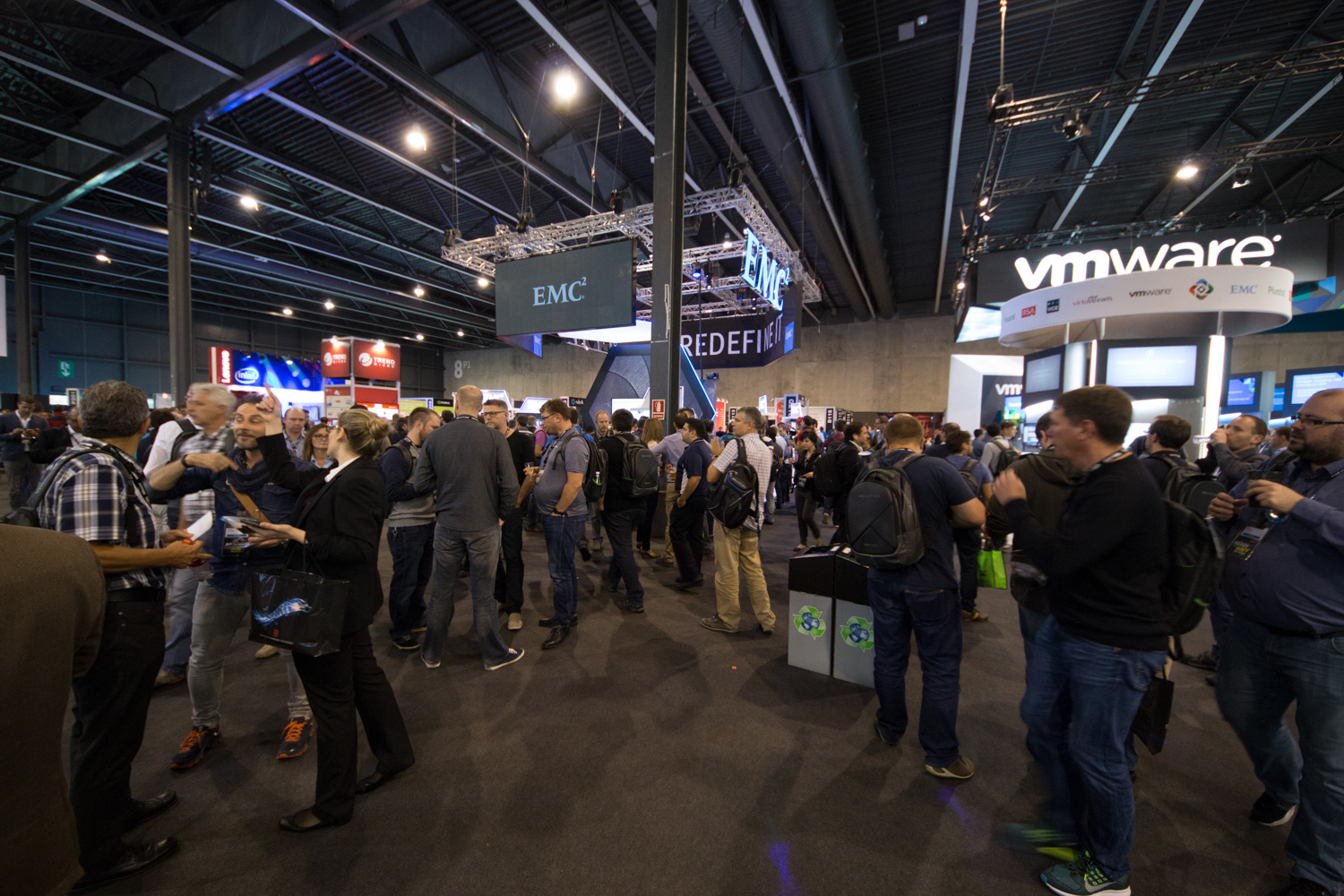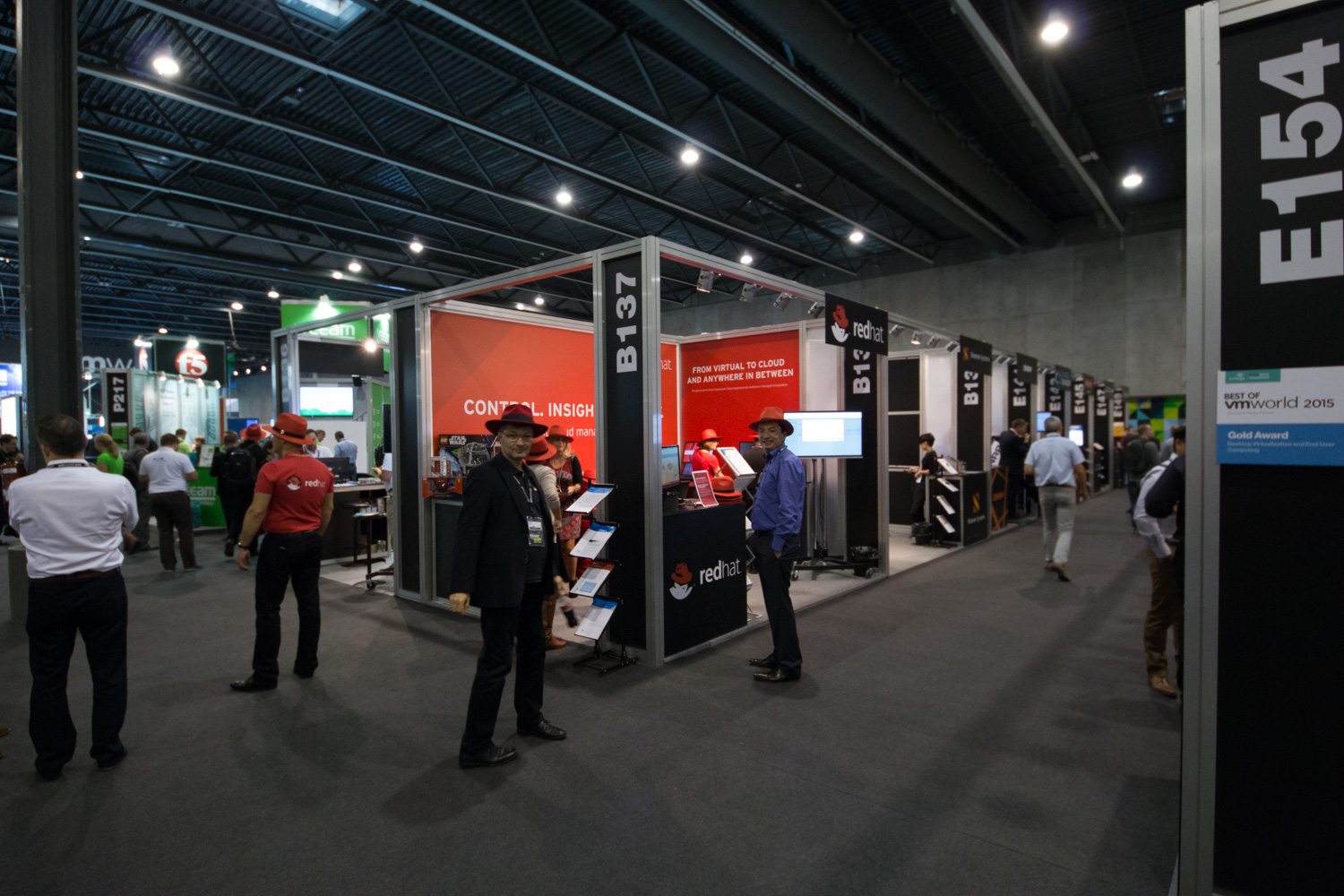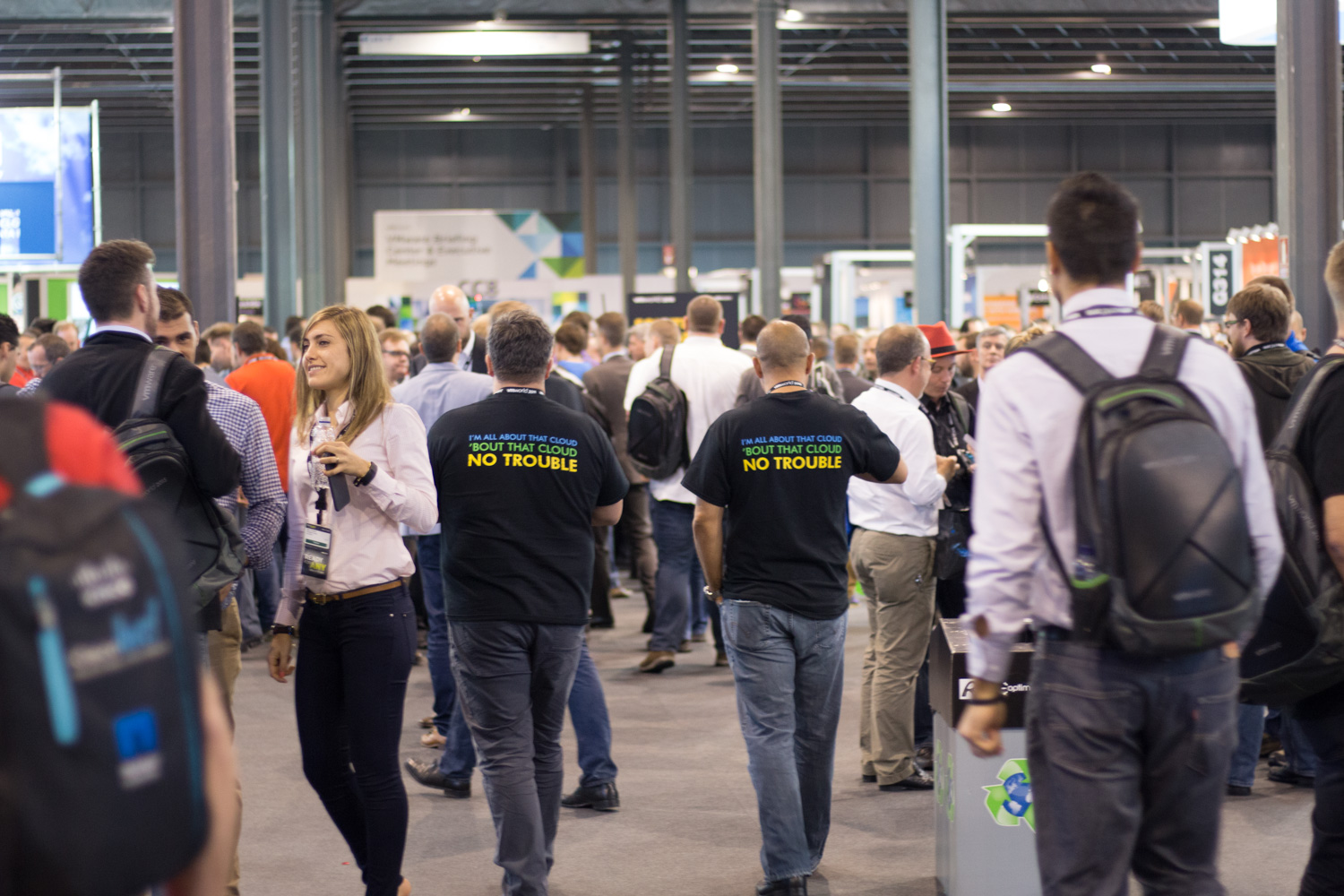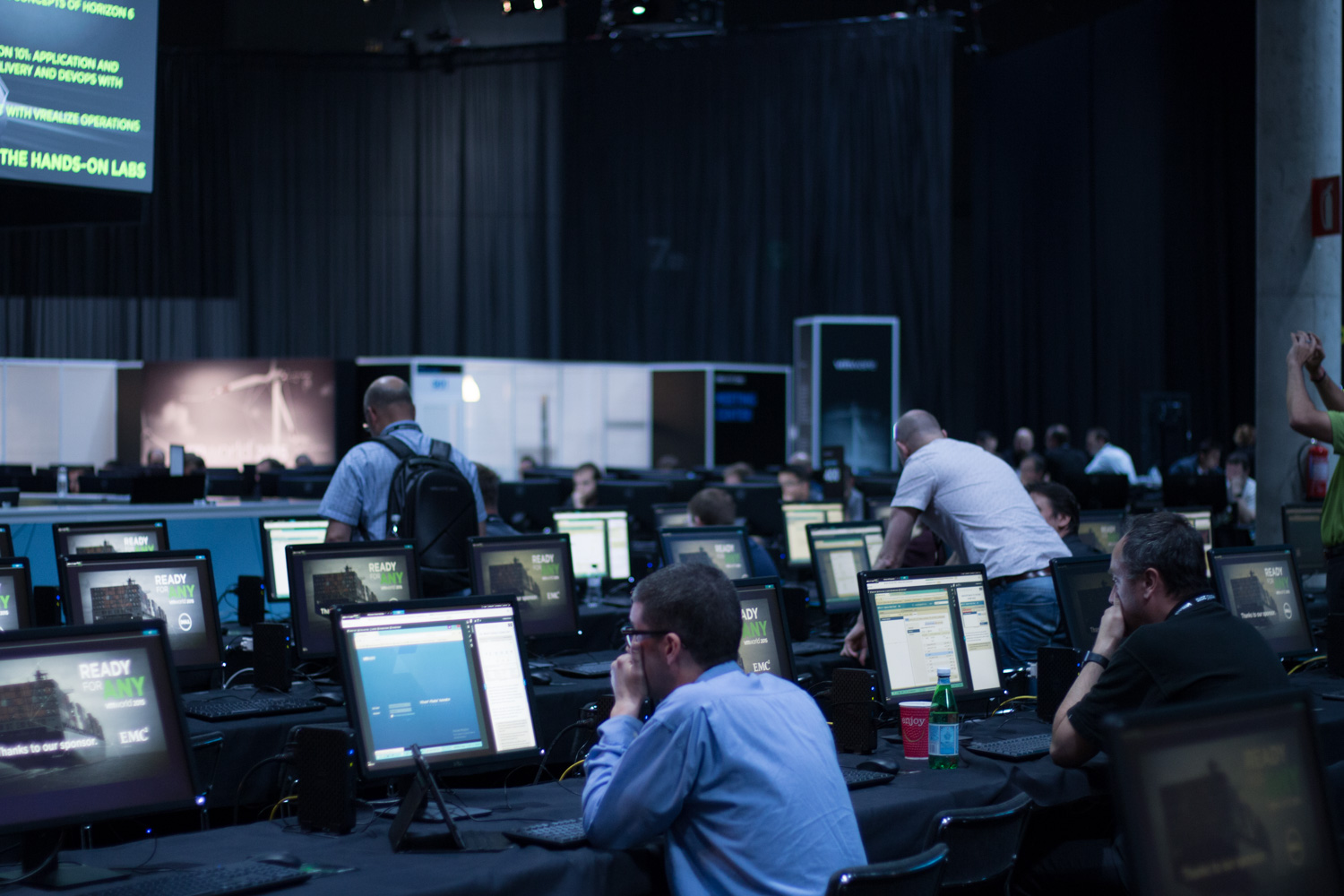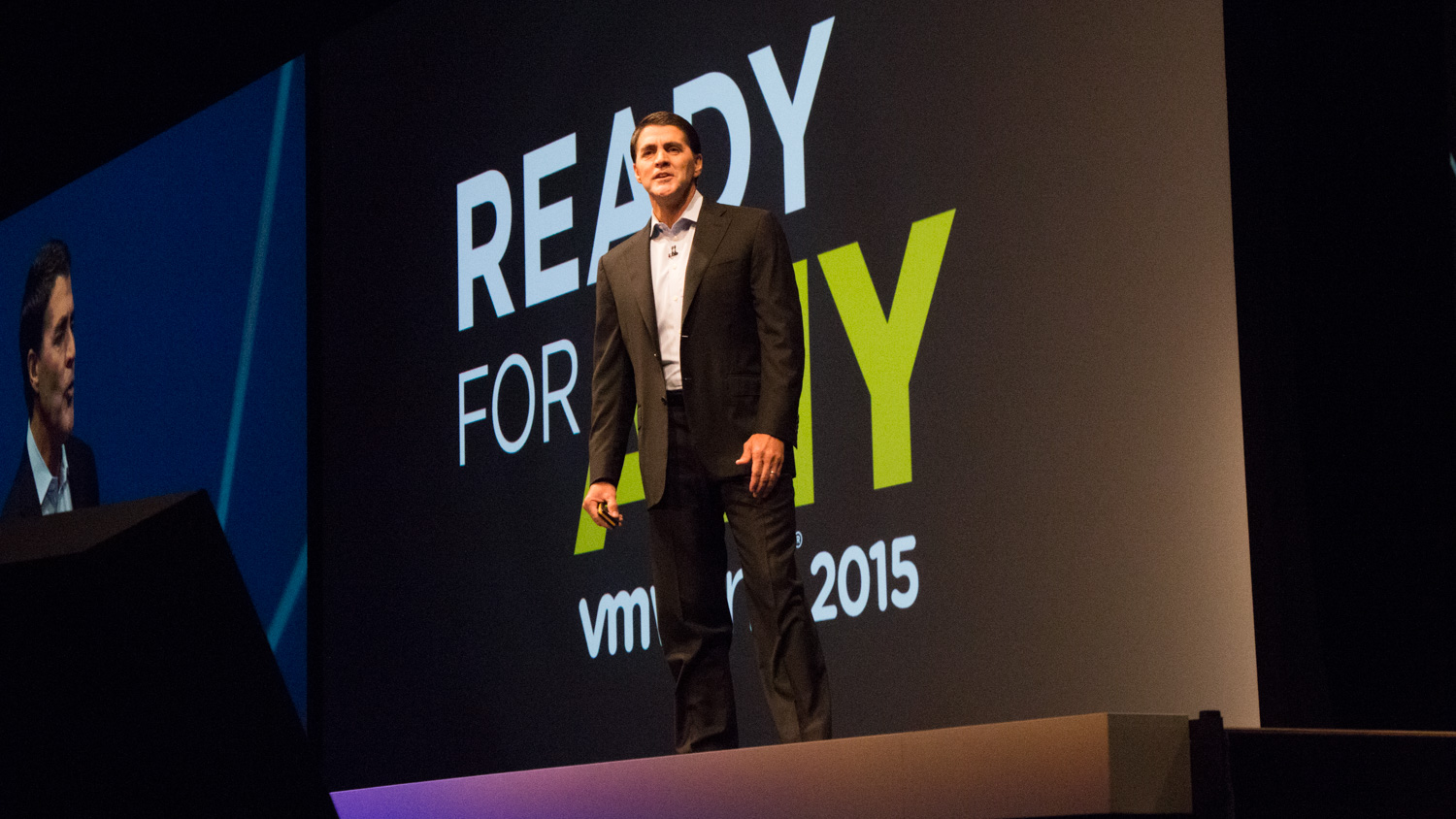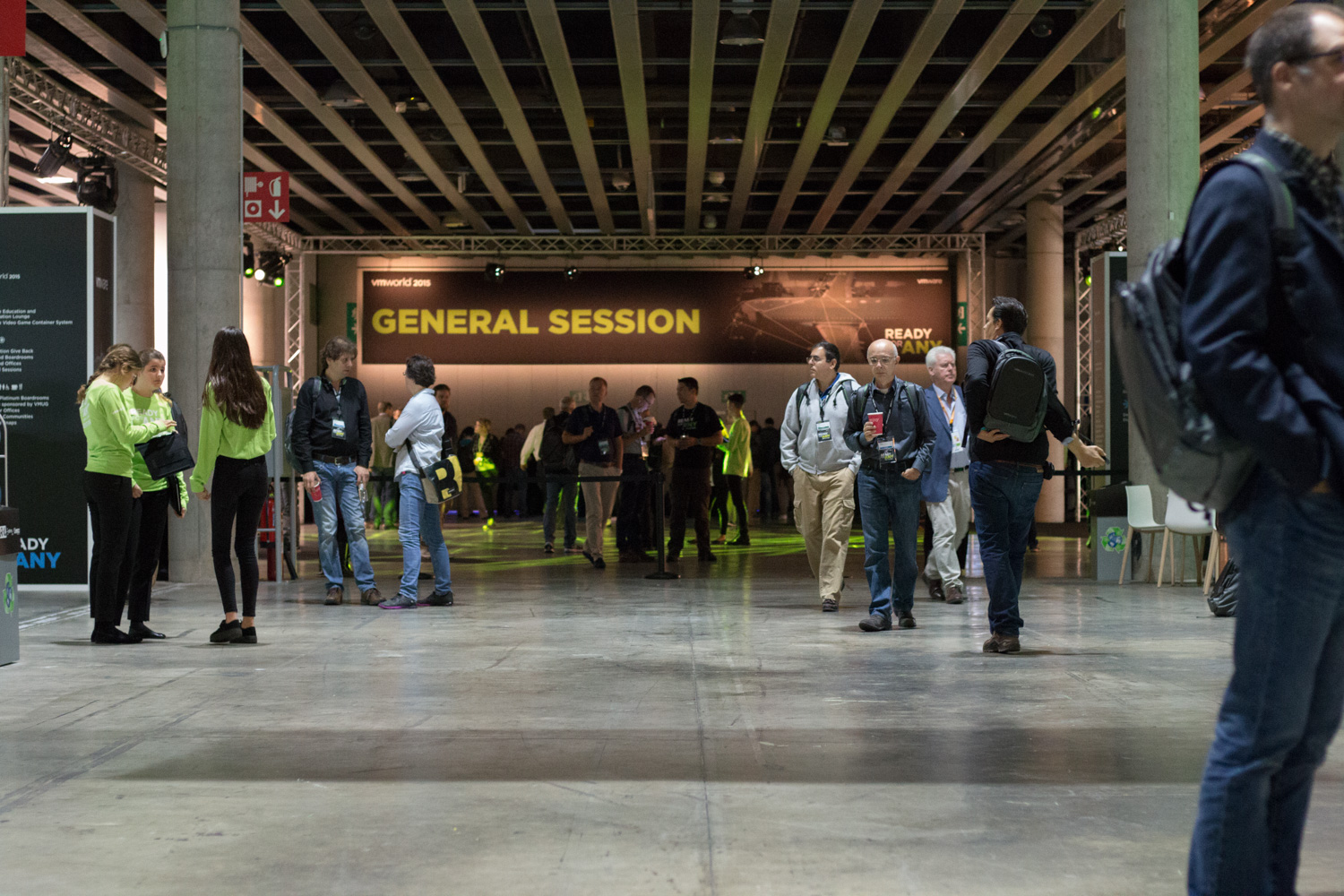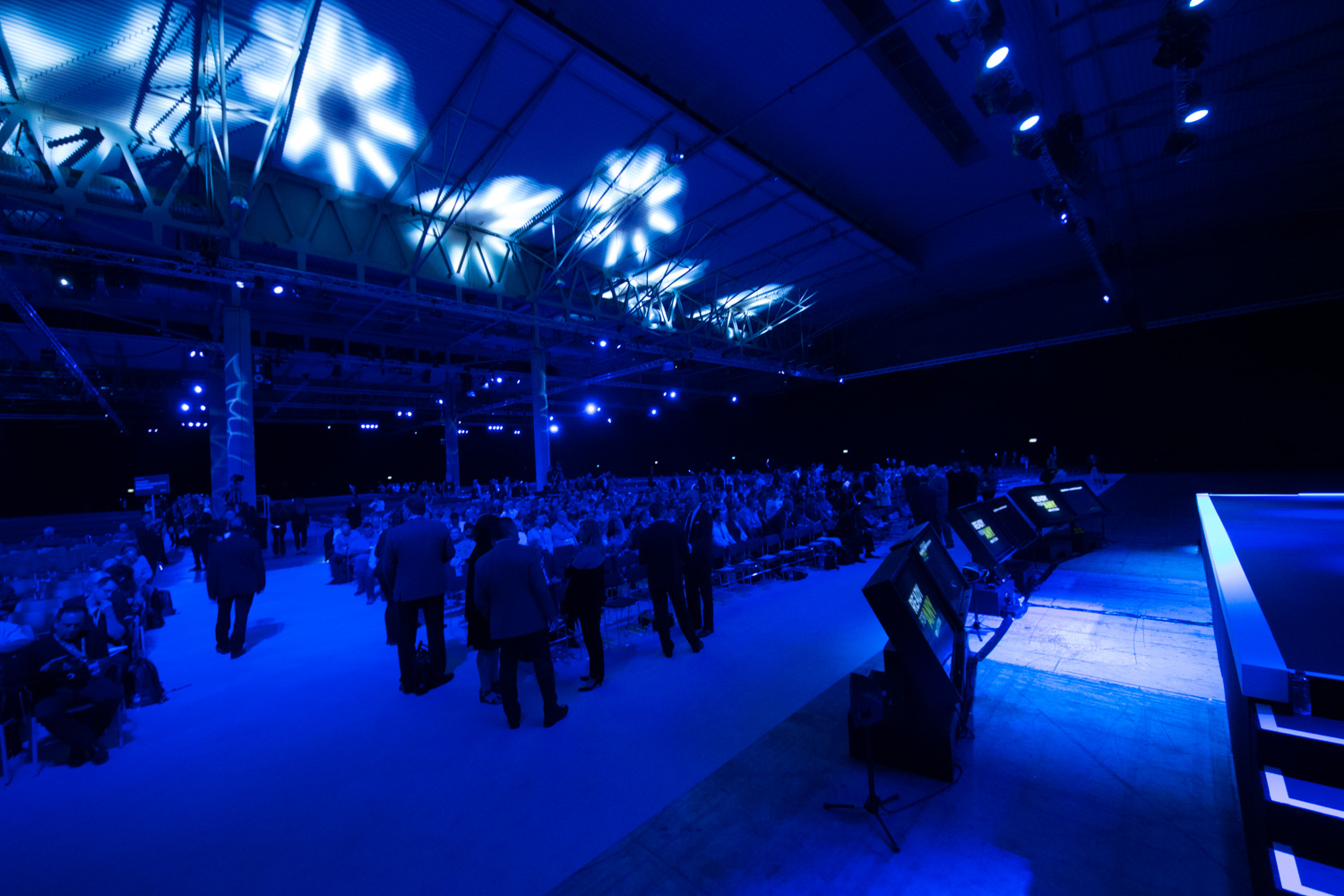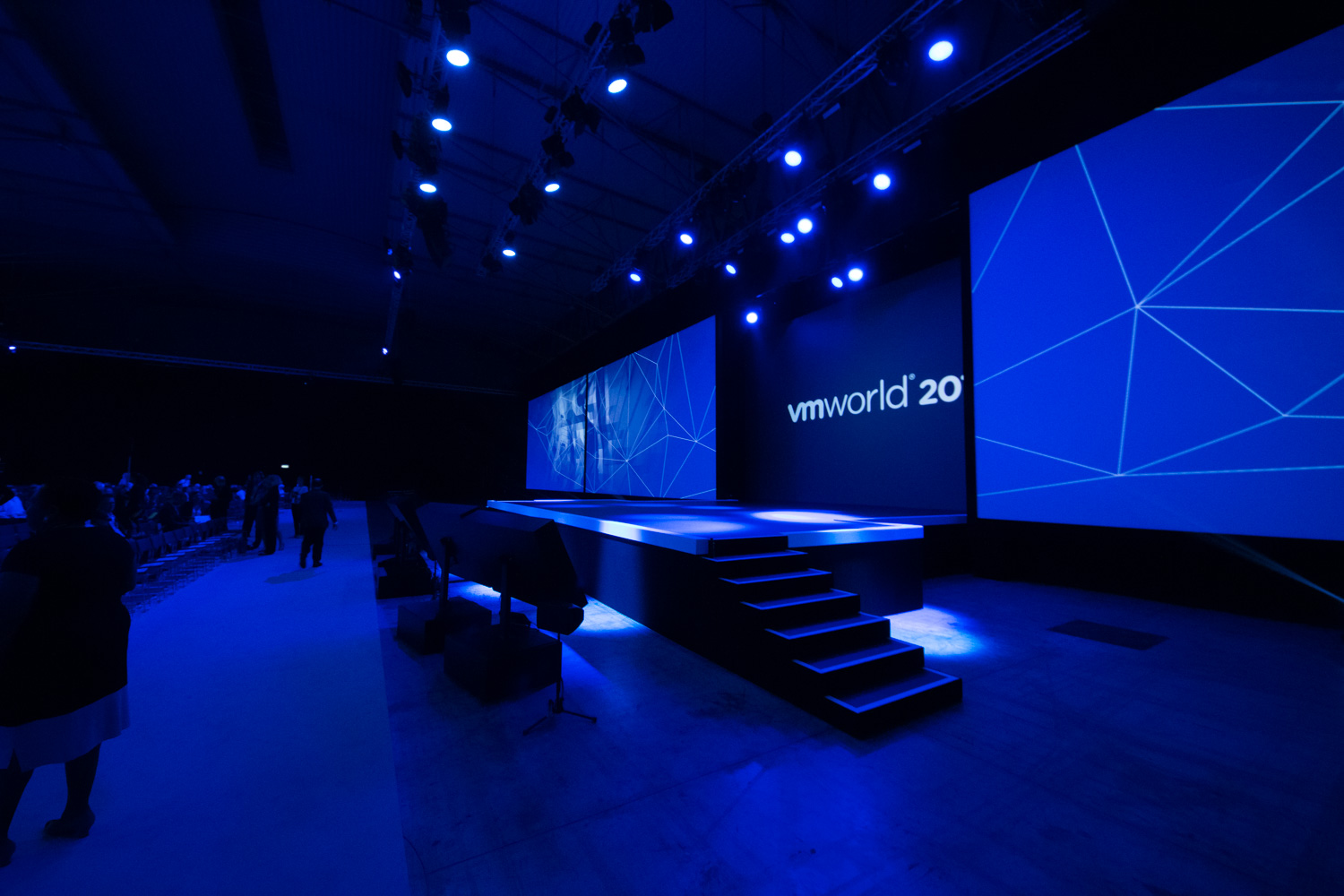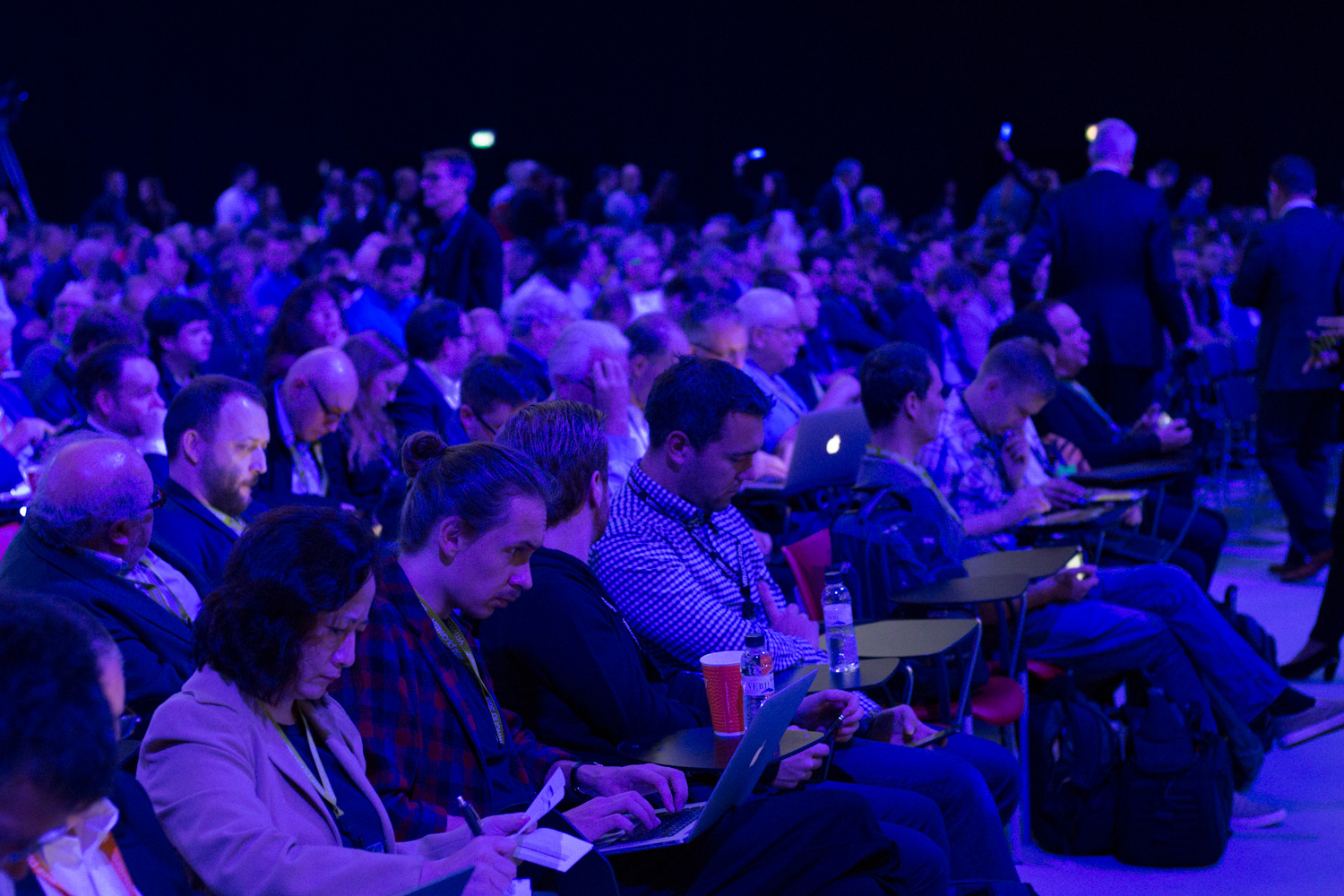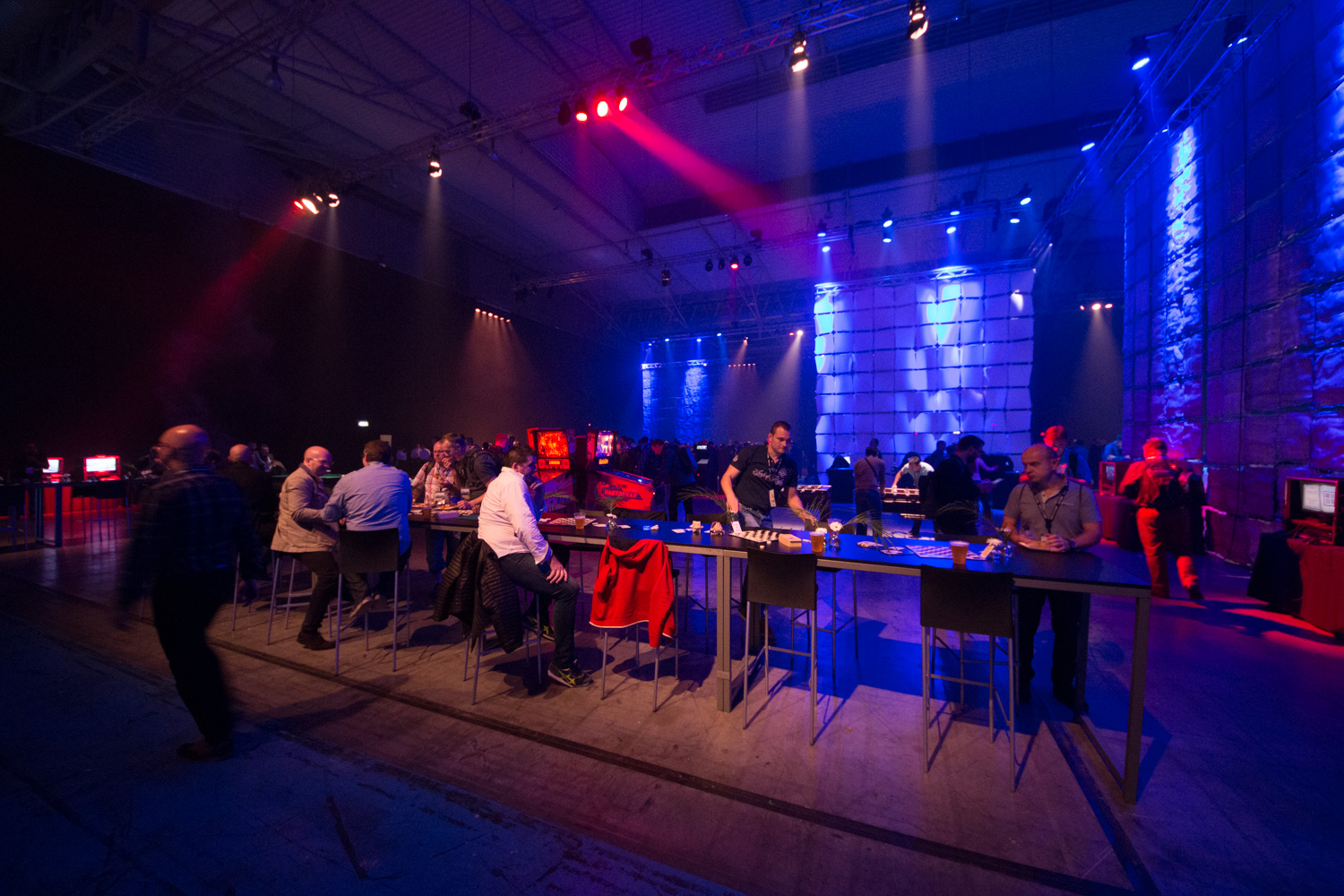VMworld Europe 2015
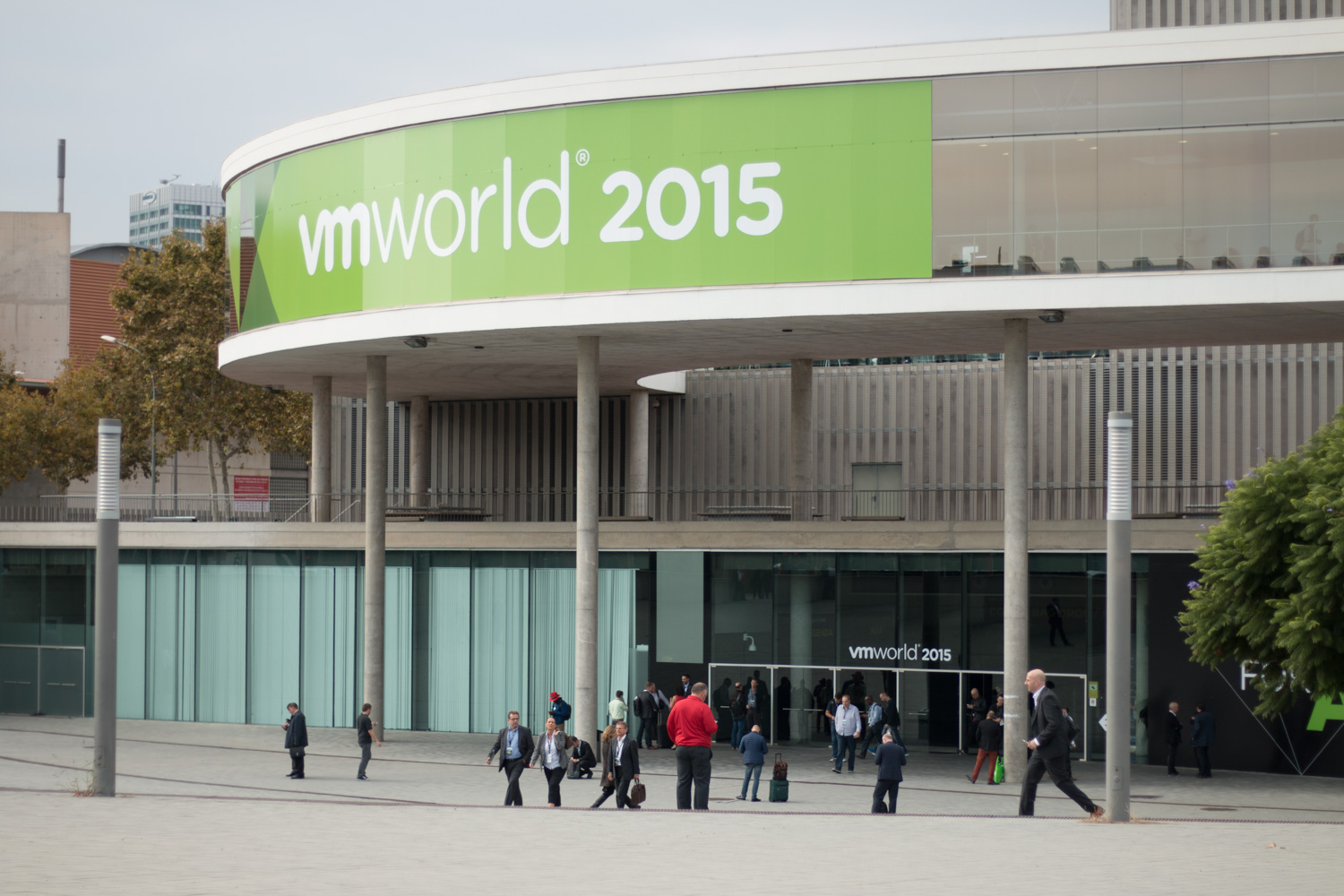
Last week the european VMworld event was taking place in Gran Via, Barcelona. Like every year VMware hosts their own event, that is focussed on VMware and partner developments. This year's event was themed "Ready for ANY", giving VMwares focus on more flexible Cloud and Mobility a voice.
On four days visitors were able to choose from a comprehensive program including:
- More than 250 breakout sessions by partners and VMware staff
- Exhibition area with about 130 partners
- Certifications at special prices
- VMware store, sale of merchandise and technical literature
- Meet and greet with vExperts

So it was definitely not boring - it was definitely hard to find the most interesting from the program. For assistance, VMware offered serveral apps for creating a personal schedule and being informed about recent events. I was really overwhelmed that the book "VMware vSphere Essentials" by PacktPub, I was working as co-author on, was also sold in the store.
Keynotes
On Monday's keynote, Carl Eschenberg (President and Chief Operating Officer) focussed on VMware's vision about modern, scalable IT infrastructures. One of the major keys was to drop cloud silos (Private, Public and Managed Cloud) by utilizing a "Unified Hybrid Cloud". Basically, this marketing expression describes integrating various infrastructure components independent of its resource type (Private, Hybrid Cloud) seamless into pre-existing infrastructure setups and using already known tools for managing them (or in other words: single pane of glass 😛). With VMware vCloud® NFV™ (Network Functions Virtualization), VMware introduced a SDDC solution for CSPs (Communication Service Provider) that combines vSphere, VSAN and the following products:
- vRealize Operations Insight
- VMware Integrated OpenStack
- vCloud Director for Service Providers
Telefonica and Novamedia were introduced as customers that are using vCloud® NFV™ to meet their growing infrastructure needs. Ray O'Farell (CTO, CDO) and Kit Colbert (VP und CTO Cloud-Native Apps) were talking about "Cloud Native Applications" as alternative to "traditional" applications like SAP and Oracle.
Bill Fathers (Executive VP and GM Cloud Services) focussed vCloud® Air™ and mentioned advantages about higher scalability. He also told about how companies need to alter their application designs to reach this goal. In this context, he referred to "Hybrid Applications" having simple designs that are suitable for cloud resource rollouts. Traditional multi-tier applications are often not ideal for execution in cloud scenarios.
Raghu Raghuram (Executive VP and GM SDDC) and Yanbing Li (VP Storage and Availability) dedicated to software-defined data center (SDDC). Especially they were talking about vRealize Suite, NSX 6.2 and VSAN 6.1. VMware also offers these products in a bundle called EVO SDDC to address customers looking for a simple solution to implement SDDCs. The advantages of vRealize Automation 7 were explained on the basis of a customer use-case.
The keynote on Wednesday was opened by Sanjay Poonen (Executive VP and GM End-User Computing) eingeleitet. Together with Rory Clements (Director, Solution Engineering EUC) he was talking about mobility and security. Combining the simplicity of customer products with enterprise security concepts is one of VMware's goals. To gain easier access to business applications on mobile devices, VMware offers an identification service called Identity Manager. This service offers single-sign-on functionality for mobile apps, web and cloud applications. To round it up, it also offers a personalized app store for mobile devices.
Martin Casado (GM, SVP, Fellow, Networking and Security) and Guido Appenzeller (CTSO Network and Security) focussed on NSX. The latest version 6.2 has been enhanced to support multiple vCenter Server instances. As a result, it is now possible to spread firewall rules and security policies over multiple vCenter installations - especially for large installations this is benefit. The update also includes mature monitoring functionality for health information of virtual networks. In a demo the seamless integration in vRealize Operations Manager was presented. It was demonstrated, how network issues can be detected and debugged on multiple layers (logical, physical). NSX now also offers Amazon Web Services support to swap out the network logic into NSX in hybrid cloud concepts. For the future VMware has planned a comparable implementation for Microsoft Azure.
EMC acquisition by DELL
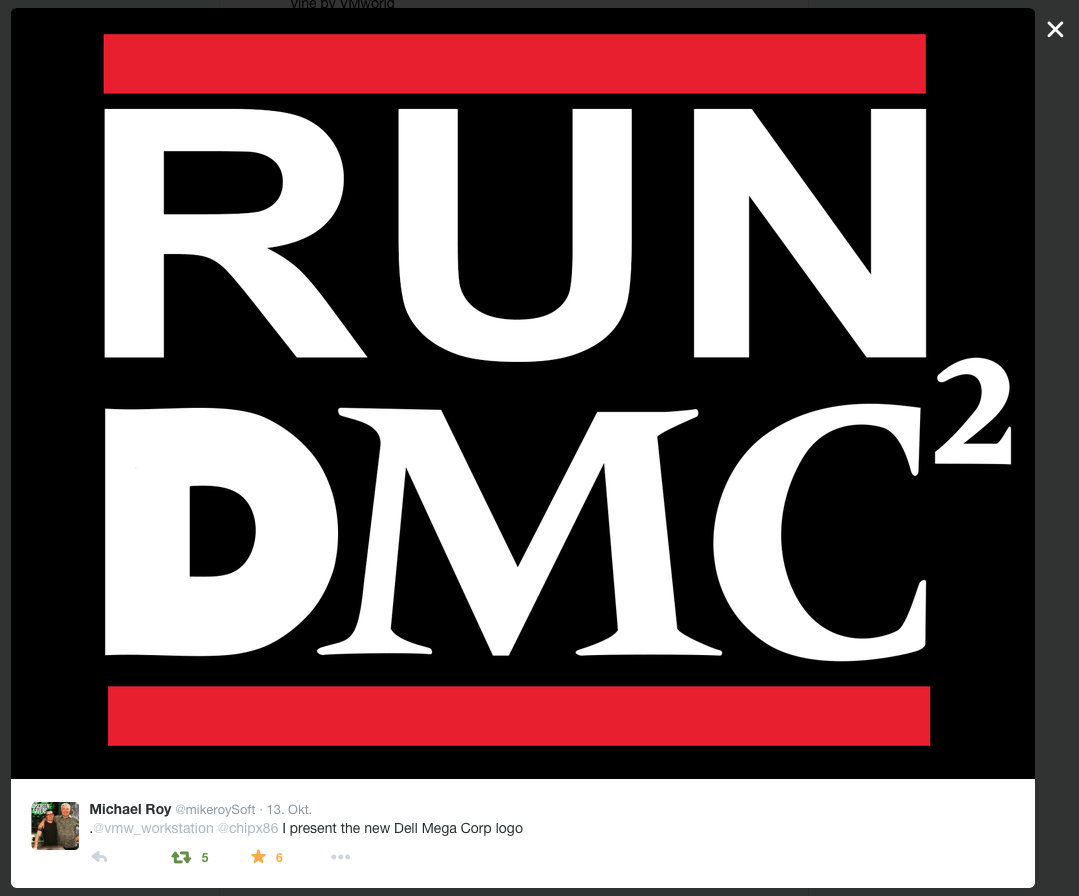
The acquisition of EMC by DELL was the hottest topic on Tuesday. For 67 billions the hardware and software vendor from Round Rock acquired the storage company EMC. Beside Michael Dell's equity, financial resources of the investment company Silver Lake were used. This is supposed to be the biggest deal in IT ever - numbers that forced hot tempered discussions. The question was how this acquisition might influence VMware and their partners. Pat Gelsinger and Michael Dell (who is a friend of the VMware CEO) underlined that this will not change VMware a lot. They are interested to broaden their eco system. It is planned that VMware stays an independent company on the stock exchange. In a press conference it was concerned that some VMware partners are DELL opponents. VMware disclaimed negative changes for customers and partners. It has been VMware's goal to broaden partnerships - after the acquisition by EMC 11 years ago this have not changed, they said. It will interesting how this deal might change the IT market. With EMC in their portfolio, DELL might be able to broaden their position in the storage and convergence market. Currently, DELL has no noticeable distribution in these markets. On Tuesday, the Twitter stream was stamped by apprehensions and parodies - the funniest thing was the assumption of a new logo. 😄
Containers and Photon™
During the keynote Hybrid Applications were mentioned. One of the characteristics mentioned by VMware is that these applications are able to provision own instances for better scalability. Another benefit of this kind of applications is that they are capable of detecting and fixing typical runtime errors. VMware named micro services and Linux containers as technical basis. To serve this technology to customers, VMware offers two completely different products: vSphere Integrated Containers and a new platform called VMware Photon™. The problem with using docker containers in combination with vSphere is, that containers cannot be utilized and monitored efficiently using the well-known tools. A demo during the keynote demonstrated that Docker containers can be monitored like conventional VMs using vSphere Integrated Containers. This concept is based on a minimal Linux distro called Photon OS™ - or jeVM (just enough virtual machine) - that is only suitable for running containers. Per container this VM is cloned resulting in greater isolation and security. The memory demand is supposed to be low as the Mini Linux only has a footprint of 25 MB - for cloning the Instant Clone technology is used. This technology that was also called Project Fargo during development is able to clone a VM in under 1 second. With VMware Photon™, a concept focussing completely on containers was introduced. Photon Machines are running containers - this microvisor (based on ESX) is installed on physical hosts. A Photon Controller is managing and authenticating the container infrastructure (see also Project Lightwave™). The advantage of this approach is that it is based on a minimal design but still includes some of vSphere's security features and also integrates with orchestration solutions like Cloud Foundry or Mesos. VMware announced that they will release Photon Controller as open-source - the Photon platform will be sold on a subscription basis. Currently this platform is only available as private beta to a closed user domain. It was also mentioned that VMware broadens partnerships with plenty container and application vendors to make this project more successful. Another demo during the keynote presented the integration with Cloud Foundry and Kubernetes.
Workspace Suite and AirWatch
With VMware Workspace Suite a software collection including the following mobility products was presented:
- Horizon 6 Enterprise Edition (VDI platform)
- Horizon FLEX (secure management of local virtualized desktops in BYOD scenarios)
- VMware Identity Manager (s_ingle-sign-on service for apps and cloud/web applications_)
- AirWatch Enterprise Mobility Management (mobile device management)
- AirWatch Content Locker Collaborate (company-wide file management and synchronization to mobile devices)
In summary, the software collection is suitable for the most mobility scenarios. A keynote demo presented the integration of a new Microsoft Windows 10 device in AirWatch. To accomplish this, it was sufficient to enter a company mail address enhancing the usability. Project A² is a technology preview vorgestellt that combines AirWatch and App Volumes to deploy Microsoft Windows 10 applications directly using AirWatch. Currently this is only possible after synchronizing with Microsoft System Center Configuration Manager.
VMware acquired Boxer - a vendor that is known for its popular PIM (Personal Information Manager) for mobile devices. In the future, this product will be integrated in the AirWatch portfolio. I'm really excited to see how this acquisition might improve the current AirWatch-PIM - it might be improved a lot. At the end, a service called VMware Horizon Air was introduced. This service serves Windows desktops and applications on vCloud® Air™ resources for various kind of devices.
EVO:RAIL 2.0 and EVO SDDC
I was really excited about the development of VMware's Hyperconverged Infrastructure Architecture (HCIA). Last year VMware presented a very interesting first version of its concept for simplifying virtual infrastructures. The appliance still combines 4 independent servers with local storage resources in a 2U case. Now, it offers more flexibility reacting on criticism of VMware customers. While the first version always had a fixed amount of CPU and memory resources ("Take it or leave it"), customers have now more freedom regarding server's hardware configuration. EVO:RAIL 2.0 includes all advantages of vSphere 6 including VSAN 6. Beyond that, it also allows:
- Integrating dvSwitches (vNetwork Distributed Switch) for NSX support
- The EVO:RAIL Engine is now a dedicated virtual appliance. The EVO:RAIL Manager can also be used to implement multiple clusters.
- New, even more modern web interface
- Integrating in pre-existing vCenter Server installations
Especially the VSAN 6 support offers new possibilities. It is possible to have up to 16 appliances (64 ESXi hosts in summary) offering 40.000 IOPS per host. Each ESXi host can run up to 200 VMs making the HCIA concept (including the NSX support) also interesting for big virtual environments. The session "EVO:RAIL 2.0 Deep Dive" by Mike Laverick was really informative and also funny. Mike, who is a well-skilled and also bloody funny presenter (really, check out the record!), focusses on the technical updates and the reasons behind it. To bring it down to a round figure, the talk also included faithfully disasters from the normal course of IT live. The new EVO:RAIL version will be available soon - VMware named no fixed date.
EVO SDDC is a new product for implementing SDDCs using the same simplicity already known by EVO:RAIL customers. It is an advancement of a technology preview that has been introduced as EVO:RACK last year. All the comprehensive configuration tasks for achieving this goal are done by an appliance called EVO SDDC Manager. It was mentioned that rolling out a complete SDDC can be done using this solution just within 2 hours. Scale out also meets demanding requirement's needs. A single rack is predicted to be able to run up to 2.000 VDI VMs and offer more than 2 million IOPS. EVO SDDC summarizes all resources as virtual rack that contains multiple workload domains (e.g. VDI, Big Data) - VMs are dedicated to such domains. VMware gives customers the possibility to plan their own SDDC design and verify it with best practices in a programme called "VMware Validated Designs". Currently, for this programme Early Access is available.
vRealize Automation 7
During the keynote, Symantec was introduced as customer having the requirement of provisioning 10,000 VMs once in a week. To fulfill these requirements, using highly automated processes was essential. Using the new version of vRealize Automation VMs including applications and databases can be deployed automatically in private or hybrid cloud ressources. It is quite notable that multi-tier applications can be designed using blueprints. Using a graphical interface applications including services and networks are designed and linked before they are created isolated in an automated process. Using vCloud Air Hybrid Networking Services (requires NSX) the complete network functionality is confiugred between various cloud infrastructures. An absolute highlight was the demonstration of a vMotion process between a private cloud and vCloud Air. Currently, this function is a technical preview - but it is really cool anyway. This function is supposed to also work along with other vCloud partners and Amazon Web Services (AWS) and Microsoft Azure later. They were also talking about a complete network traffic encryption between cloud ressources. vRealize Automation will be released by the end of 2015.
Hands-On Labs
Unlike last year, I had the possibility to solve some hands-on labs. VMware offers the possibility to test various products and solutions in virtualized labs every year. After selecting a lab, a virtualized vSphere environment is provisioned in the VMware cloud - it can be used for a fixed time range. The demand is also quite big here - the most popular labs included vCloud Air, NSX and vRealize. Beside self-placed labs there were also moderated labs that required a registration. Anyway, VMware experts loved to help you in case of any problems. At least for a new book I'm currently working on, I had a look at the following labs:
- vSphere with Operations Management 6 (HOL-SDC-1602)
- VMware NSX Introduction (HOL-SDC-1603)
- vSphere Performance Optimization (HOL-SDC-1604)
- VMware vCloud® Air™: Jump Start for vSphere Admins (HOL-HBD-1681)
- vCloud® Air™ Disaster Recovery (HOL-HBD-1684)
Visitors have between 60 and 90 minutes time for solving particular modules. It is not possible to solve all modules in this time range - so it is advisable to focus on some particular modules. This offer is also free outside VMworld kostenfrei - only an account and a web browser is needed to solve the labs at home. For me these labs were very valuable - mostly you don't have the time at work and not the adequate hardware at home to test some products. Especially the NSX lab helped me to gain an overview about network virtualization. I highly recommend to have a look at these labs - it's worth it!
Conclusion
Again, I really enjoyed the event. Especially the networking, the break-out sessions and hands-on labs were very valuable for me. I really recommend this event for VMware administrators!
Video and photos
I uploaded a video about VMworld 2015 on YouTube. Here are some photos of the event:

